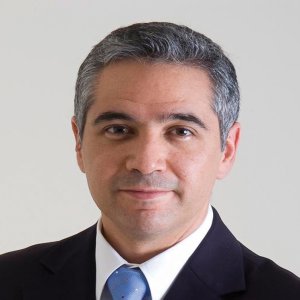Multi-Brand Dealerships Improving Business for All
STORY INLINE POST
Of all the stages on which the automotive industry’s battles have been waged, the distribution market has been among the fiercest. “The domestic market has been stagnant for many years, but the number of dealerships has grown from 900 to 1,800 in just a few years,” explains Alberto López de Nava, President of Grupo Alden. In the space of 30 years, Grupo Alden has amassed 32 dealerships across 11 brands, with the president attributing this success to the company’s capacity to transform according to the whims of the industry. “In the 1980s, each player in the Mexican distribution market focused exclusively on one OEM, relying solely upon it for its growth,” explains Alberto. He recalls how he went against the grain by representing several brands. While some OEMs once viewed this as a conflict of loyalty, Alberto maintains that an open distribution network actually led to business improving for OEMs. “Ford was the last one that held out and did not allow multi-franchises. As a result, other OEMs were acquiring its best dealers.” Upon discovering this, Ford reconsidered its dealership practices and Autofin, led by Juan Antonio Hernández, became the first outside dealer to obtain a Ford franchise. While expanding into other brands may be profitable for all parties involved, Alberto stresses the importance of not mixing profits across dealerships, given that each brand stands as an independent profit center. “We do not allow our salesmen for one brand to deliver a car from another. If they have a customer that wants another brand, they have to send him to another franchise,” he adds. This variety has opened the doors to new opportunities, especially in fleet services. For example, Grupo Alden has created a multi-brand division where it delivers fleets from all its main brands, including 2,400 vehicles from Nissan, 1,600 from Volkswagen, as well as vehicles from Ford, Toyota and Honda.
Alberto says that breaking paradigms has made Grupo Alden stand out from its competitors, especially in the appearance of its dealerships. While traditional dealerships are built horizontally with the showroom looking to the street, Grupo Alden’s Ford Condesa facility stands out by being a vertical structure. “It has six stories, -1 is service reception, ground level is parking, the first floor is Ford, the second floor is Lincoln, the third floor is service center, and the fourth floor contains offices. With its 11 productive service spaces, it has become the epitome of efficiency. Ford now encourages this sort of efficient model for its dealership network,” says Alberto. Additionally Grupo Alden has become an important dealer for Audi and is responsible for 15% of its total sales in Mexico. Becoming the most successful Audi dealership was not simply gained with a beautiful dealership exhibiting the vehicles, but also with a keen business sense. “In the past, we had an issue with where to place our Audi dealership, so we had a temporary tent with air conditioning put up in the State of Mexico. It certainly was not a typical dealership but we managed to sell more than any other established dealership,” Alberto recalls.
“Managing 11 brands poses no challenge to Grupo Alden as it adopts the best practices from each OEM and applies them to its own business model,” says its Director General, Carlos Alberto López de Nava. He points out that this change in processes began with the acquisition of the Toyota dealership. “After World War II, Toyota adopted its current lean manufacturing principles and believes in them wholeheartedly. Upon securing a dealership for Toyota, we also had to apply these practices and we began to believe in them as well.” According to Carlos Alberto, the principles of lean manufacturing are first applied with the 5S system: sort, set in order, shine, standardization, and sustain. This system is thought to reduce waste and optimize productivity by maintaining an orderly workplace and using visual cues to achieve more consistent operational results. “Visibility gives us the ability to evaluate our inventory, see where we are succeeding in the availability of spare parts, and see where we are lacking,” he adds.
When applying lean manufacturing methods to a distribution business, it is crucial to standardize and sustain all procedures. All of these procedures, ranging from sales to service, must be reevaluated and reviewed to obtain optimal efficiency levels. “Every person is allowed to challenge the process. This requires us to have a good managerial attitude because you have to be willing to accept criticism,” Carlos Alberto admits. This open-minded approach is crucial during the collaboration process with OEMs to adapt vehicles to consumer needs. When Toyota first entered the Mexican market, six dealers were appointed to discuss the vehicles and market opportunities. Carlos Alberto recalls the experience: “We openly reported the adaptations needed in the vehicles and after four months, the vehicles had been perfected. This is the sort of collaboration we have with OEMs when sharing our views on the vehicles.” Alberto emphasizes a golden rule that states no manufacturer or dealer can receive or transfer a faulty product. “When quality is in question, the assembly line is stopped to fix it. This principle is transferrable to any business,” he explains. “Toyota stops the assembly lines in its plants all over the world thousands of times, for maybe five or ten seconds, but even such a short delay costs a lot of money.” Grupo Alden not only has adopted the lean manufacturing principles but embraces them. For Alberto, quality is constructed along the supply chain, and dealers play an important role in maintaining it.



















